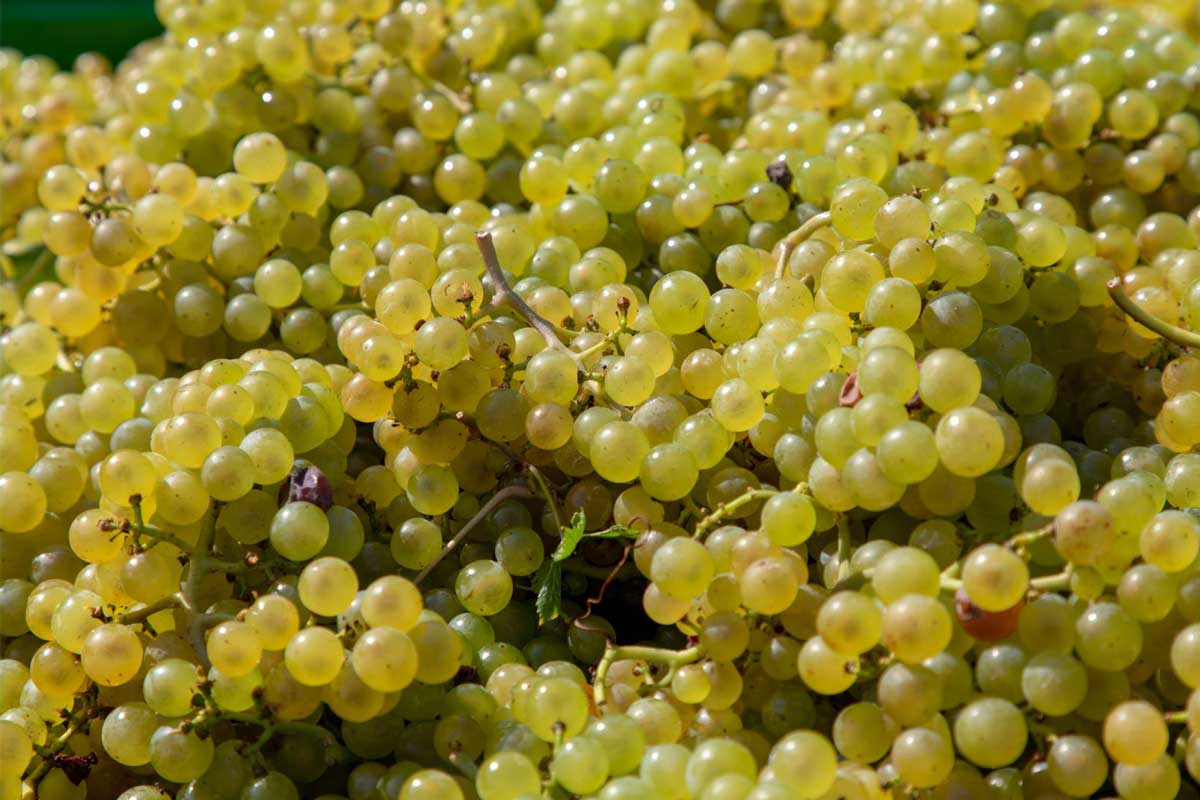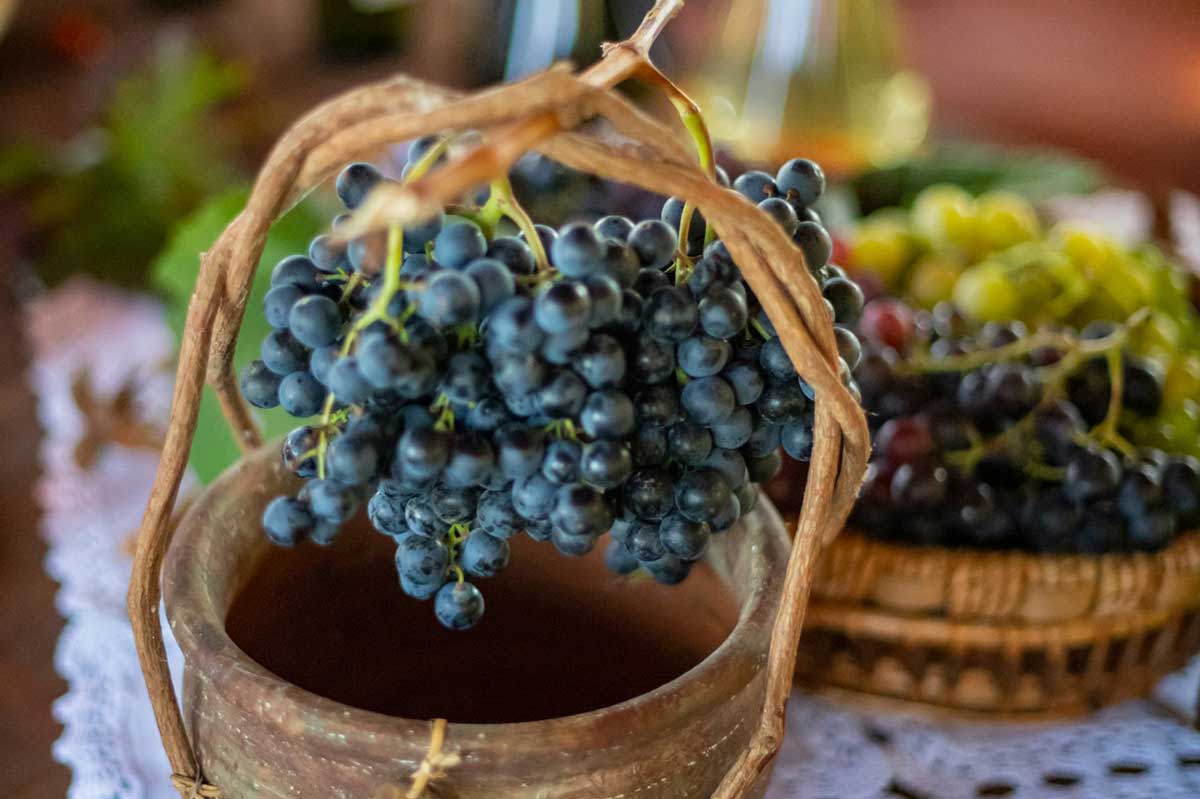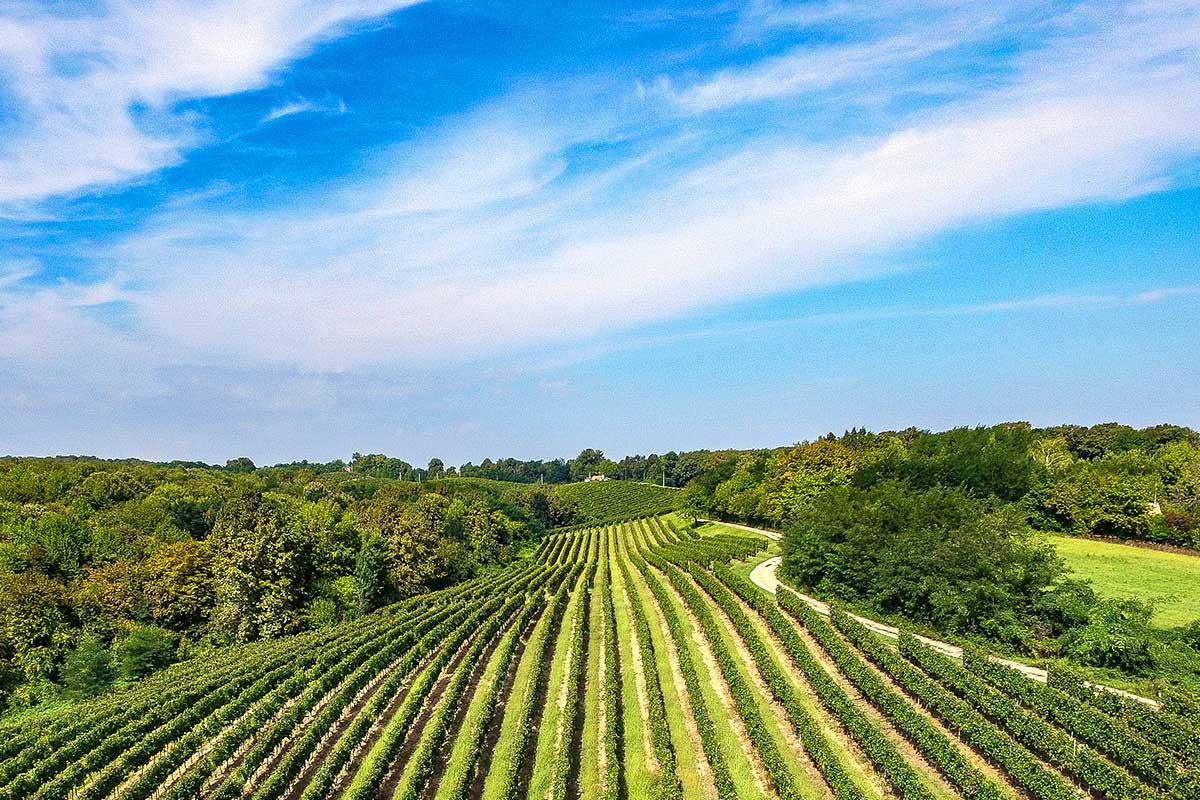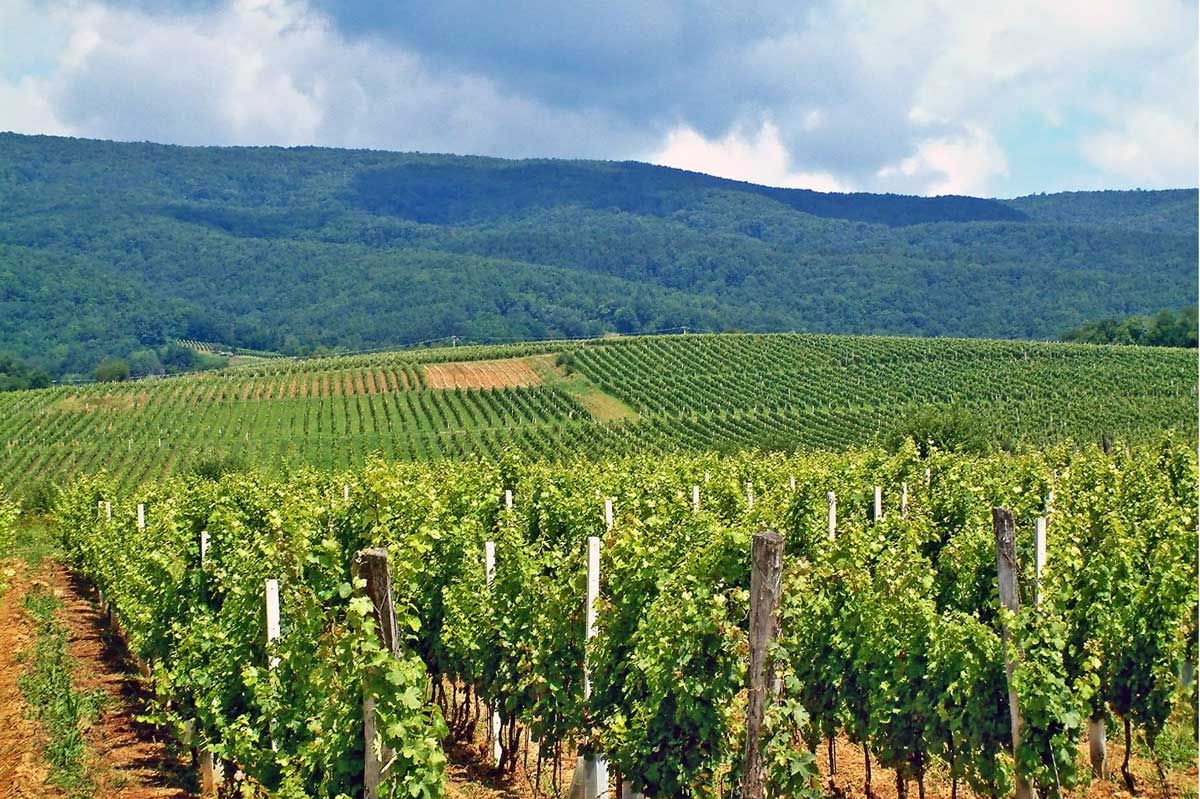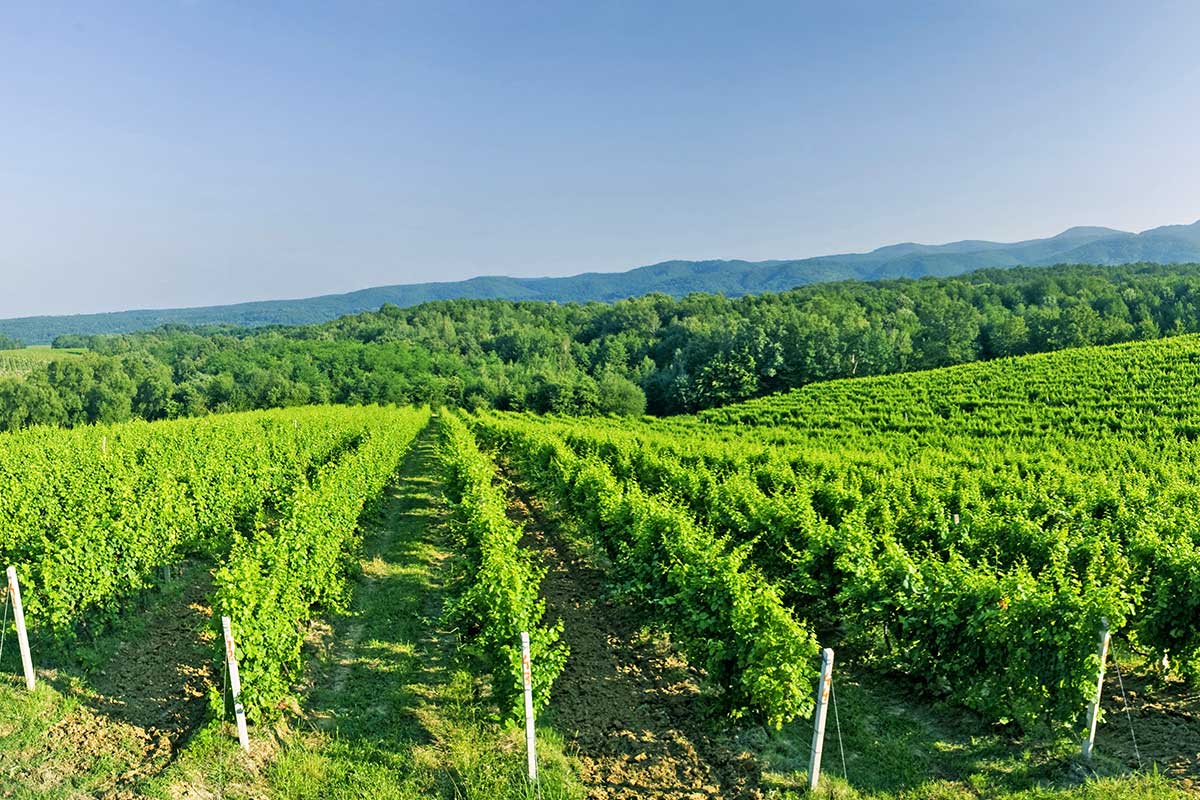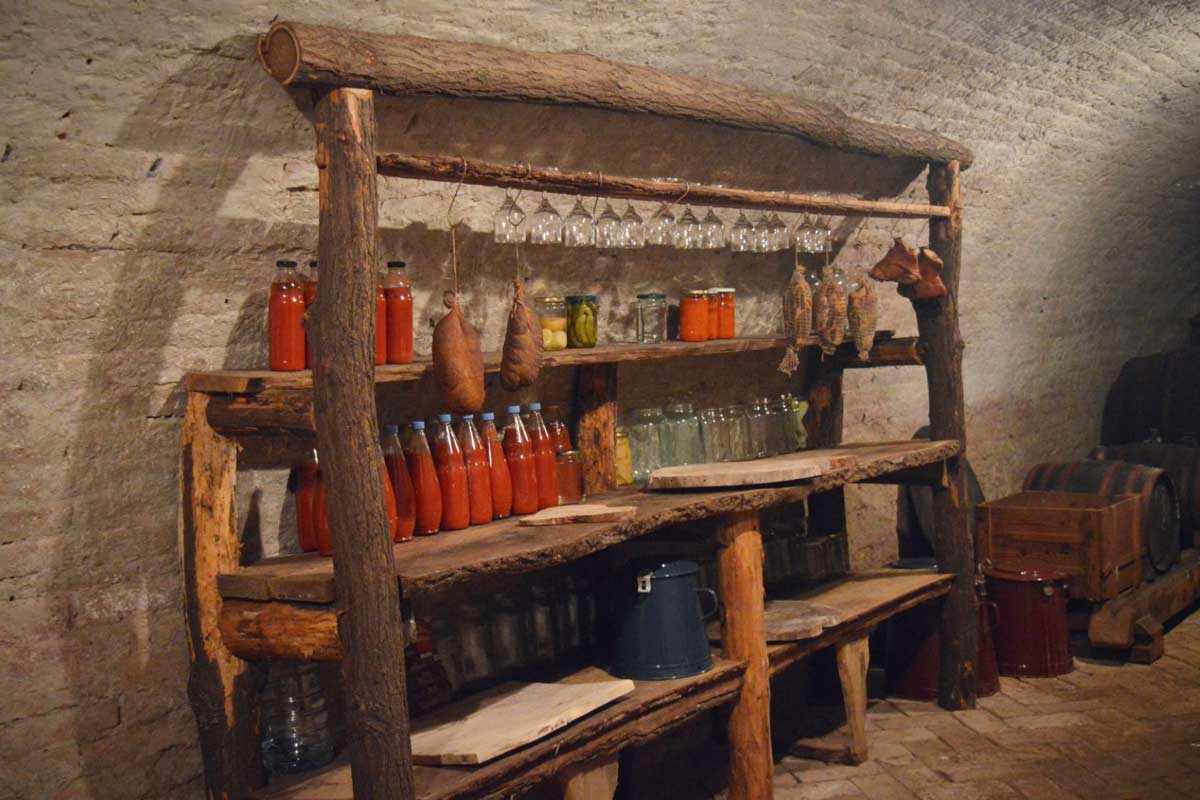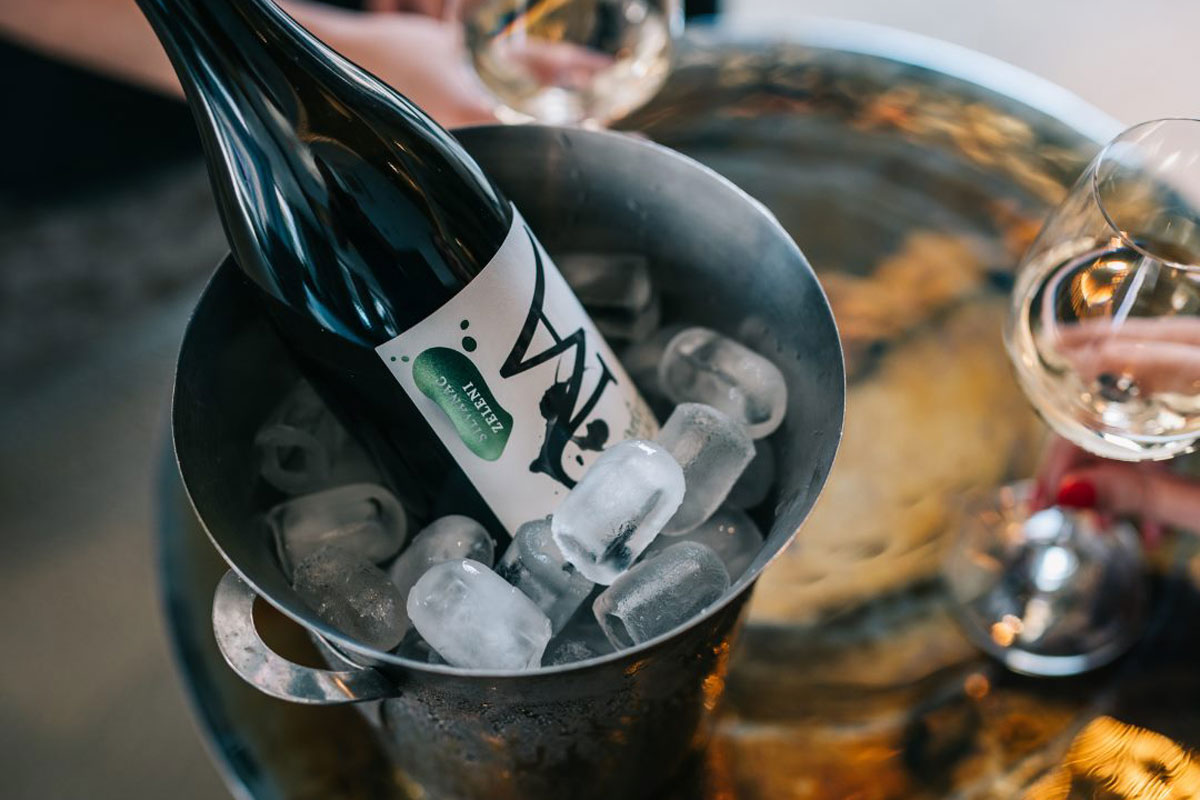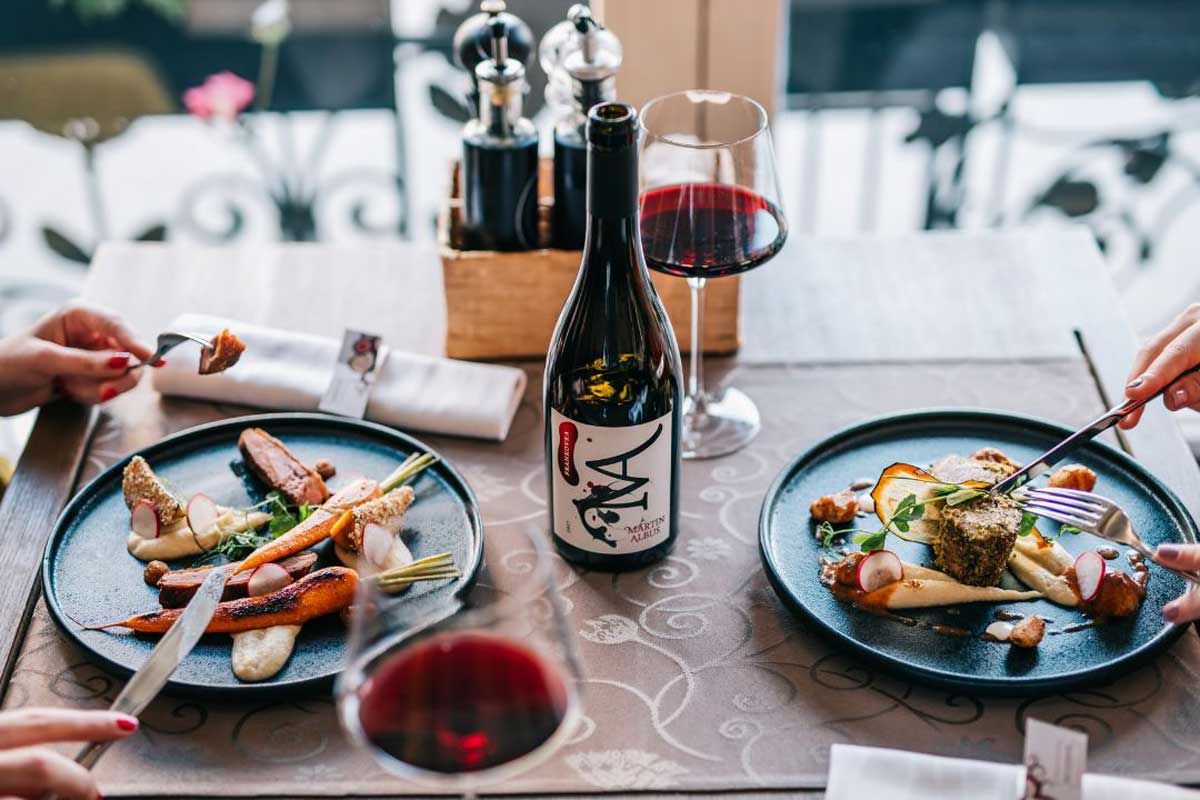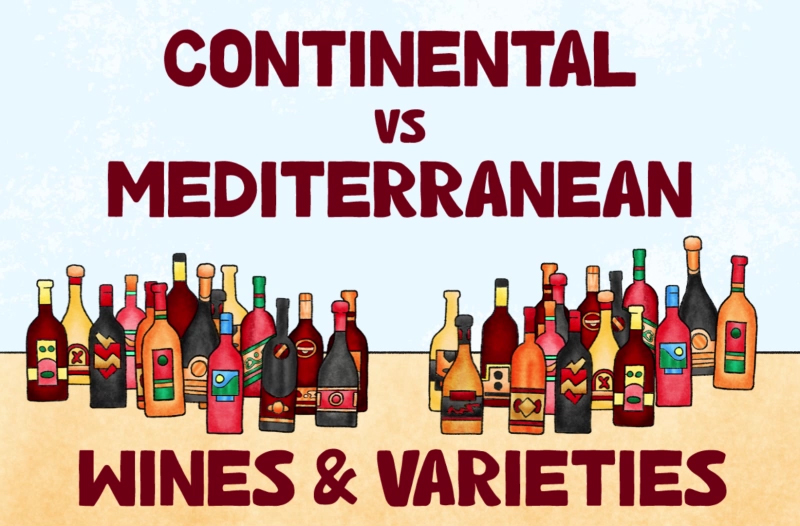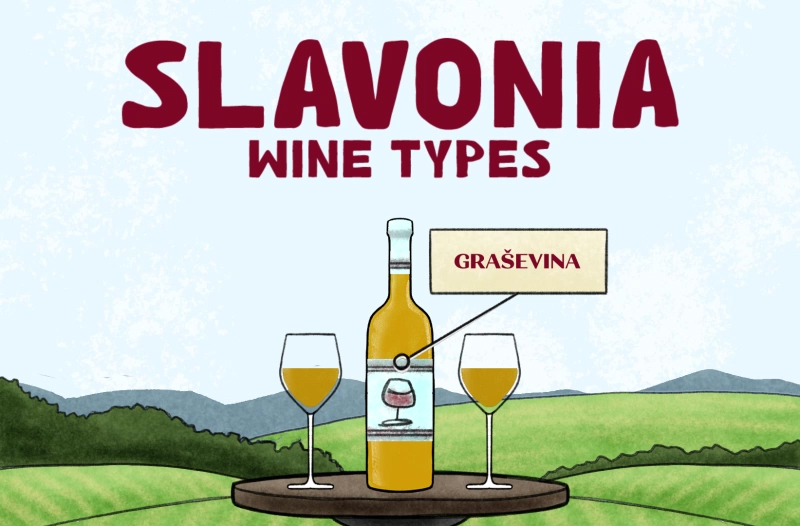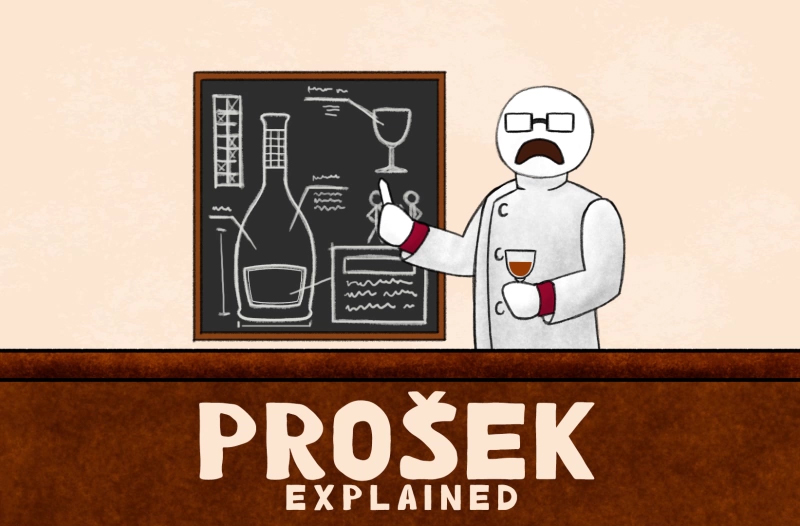Slavonian Wines
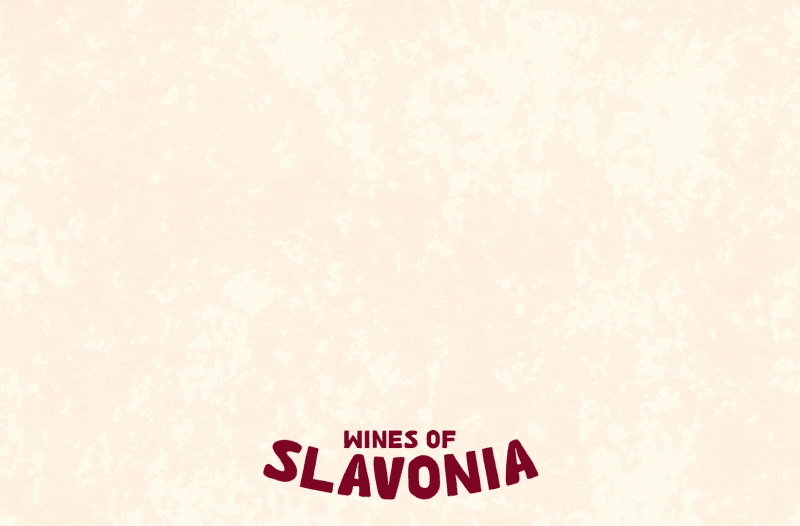
As we embark on this journey through Slavonian wines, it’s crucial to understand their integral role in the broader context of Croatian wine. From the sun-drenched hillsides to the historic cellars, Slavonian wines contribute a distinct flavour profile that adds to the mosaic of Croatian winemaking, making them a must-explore for any wine enthusiast seeking authenticity, history, and a taste of Croatia’s vinous soul.
Does Croatia produce good wine?
Yes, and yes. Croatia is a diverse country with many different geological and climate influences. Tradition of winemaking dates as far back as other Old World winemaking regions.
In short, conditions for winemaking are excellent, and the results are apparent.
A growing number of accolades and international recognitions continue to shower on all kinds of Croatian wines. From sparkling to sweet, Croatia has something to show for every wine style there is.
Croatian wines are made in limited quantities – a country of thousands of small wineries can only produce as much.
In addition to this circumstance, Croatian winemakers are dedicated to quality. That is the other important reason why some Croatian wines aren’t price-competitive.
What is the traditional wine of Croatia?
Croatia’s traditional wine is different for every region.
In Slavonia, most traditional is Graševina. Traditional Graševina is made as a still white wine that can accompany numerous different meals.
In Dalmatia, the most traditional is prošek, a uniquely Dalmatian sweet wine. Traditional varieties are Plavac mali and Maraština, usually made as dry red (Plavac mali) and dry white.
In Istria, traditional wines are Malvasia, Teran and Muscat.
In Upland Croatia, traditions vary based on local influences. Therefore, aromatised wine from Samobor called Bermet is an old tradition in Plešivica and Samobor subregion. Refreshing dry white wine from Kraljevina variety is traditionally connected to Prigorje subregion.
But, everywhere in Croatia, Graševina is to be found. This originally Slavonian variety is omnipresent and most welcomed everywhere in Croatia.
What is the most popular wine in Croatia?
Graševina is the most popular wine in Croatia. Despite the popularity of other wines from other indigenous varieties, Graševina is by far the most planted grape variety in Croatia.
As a dry white wine, usually fresh in style, Graševina is very grateful – you can pair it with many different dishes, not only in Slavonian traditional cuisine.
Furthermore, Graševina is today made in any style: sparkling (as Champenoise method, as Charmat method, as PetNat), fresh dry white wine, aged complex white wine, sweet wine (from late harvest to ice wine)
Characteristics of Slavonian Wines
Slavonian wines, with their deep ties to the land and heritage, are an essential part of Croatian winemaking. The region’s winemakers, often family-run establishments, pass down their knowledge from generation to generation, creating a continuum of expertise.
Slavonia boasts a diverse range of grape varieties, each contributing to the region’s distinct wine profile. The interplay between these grapes, the region’s terroir, and the combination of traditional and modern winemaking techniques results in various wine types.
Unique grape varieties
In Slavonian vineyards, a medley of indigenous and international grape varieties flourish, creating a diverse range of wines that cater to every discerning taste. Let’s explore some of the standout grape varieties that define the character of Slavonian wines:
- Graševina: King and Queen of Slavonia
Graševina reigns supreme among Slavonian grape varieties. Renowned for its crisp acidity, this white grape thrives in Slavonia’s continental climate. The resulting wines are refreshing and versatile, expressing citrus and floral notes and occasionally a minerality that reflects the region’s terroir. Yet, Graševina’s versatility enables winemakers to create structured complex whites aged in a cellar and many other expressions.
- Frankovka: The Noble Red
Frankovka, or Blaufränkisch, is one of Slavonia’s premier red grape varieties. This noble grape yields wines with a deep ruby hue and a complex flavour profile. Expect a harmonious blend of dark berries, spice, and velvety tannins. Deeper earthy notes are expected in the finest examples. Slavonian winemakers masterfully craft Frankovka into both single-varietal wines and impressive blends, showcasing the grape’s adaptability and its ability to express the nuances of the region.
- Traminac: Aromatic Excellence
Traminac, also known as Gewürztraminer, adds an aromatic flair to Slavonian vineyards. This grape variety produces wines with intense floral aromas, lychee undertones, and a hint of spice. Slavonia’s terroir, particularly the Danube sub-region and Ilok vineyards, imparts a unique character to Traminac, creating a sensory experience that delights wine enthusiasts seeking a fragrant and expressive white wine.
Terroir influence
The term “terroir” encapsulates the environmental factors that influence the grapes’ growth and, consequently, the flavours and aromas of the resulting wines. In Slavonia, it is the same. The terroir is a harmonious interplay of elements that contribute to the exceptional quality of the wines coming from a particular position.
Soil Composition
Generally, Slavonia’s vineyards thrive in mineral-rich soils, a legacy of ancient geological processes. The predominantly loamy and clayey soils create an ideal foundation for grapevines, imparting unique mineral nuances to the wines. These soils provide essential nutrients and contribute to the well-structured and elegant character of Slavonian wines.
Continental Climate
Slavonia experiences a continental climate characterised by hot summers and cold winters. The significant temperature variations throughout the year play a pivotal role in the grapes’ development, fostering complexity and balance in the wines. Warm summers ensure optimal ripening, while the cool nights preserve the grapes’ natural acidity, resulting in wines with both depth and freshness. Looking generally, Slavonia is becoming warmer due to climate change.
Topography and Microclimates
The undulating landscapes of Slavonia create microclimates within the vineyards. Slopes, valleys, and river proximity influence temperature variations, sun exposure, and air circulation. Winemakers leverage these microclimates to cultivate specific grape varieties in the areas where they can fully express their potential. This meticulous attention to site selection adds layers of complexity to Slavonian wines.
The wine region of Slavonia and Danube
Did you know Slavonia and Danube cover over 30% of vineyards in Croatia?
Slavonia and Podunavlje, the ruling realms of white wine varieties with Graševina at the helm, paint a landscape adorned with vast vineyards and an ever-increasing array of top-notch wines. For decades, Slavonia has proudly worn the crown as Croatia’s white wine empire, cultivating not only indigenous grapes but also international favourites that have earned global acclaim—think Pinot Gris, White Riesling, Chardonnay, Traminac, White Sauvignon, Pinot Noir, Cabernet Sauvignon, Merlot, Zweigelt, and more.
The sprawling vine-covered expanses, once not an unequivocal indicator of wine quality, have undergone a transformative journey recently. Winemakers in Slavonia and Danube have dedicated themselves to elevating their production standards, striving for excellence with each harvest. Simultaneously, a wave of new, smaller producers has emerged in the last decade or two, weaving their passion into the very fabric of the region.
Popular Slavonian wine subregions
The Danube River weaves a narrative of three extraordinary vineyards:
- Srijem,
- Erdut,
- and Baranja.
Nestled in the embrace of the central Slavonian highlands—comprising the Psunj, Papuk mountains, Krndija, Dilj gora, and Požeška gora—along with the enclosing Požega basin, lie the subregion vineyards of Slavonia.
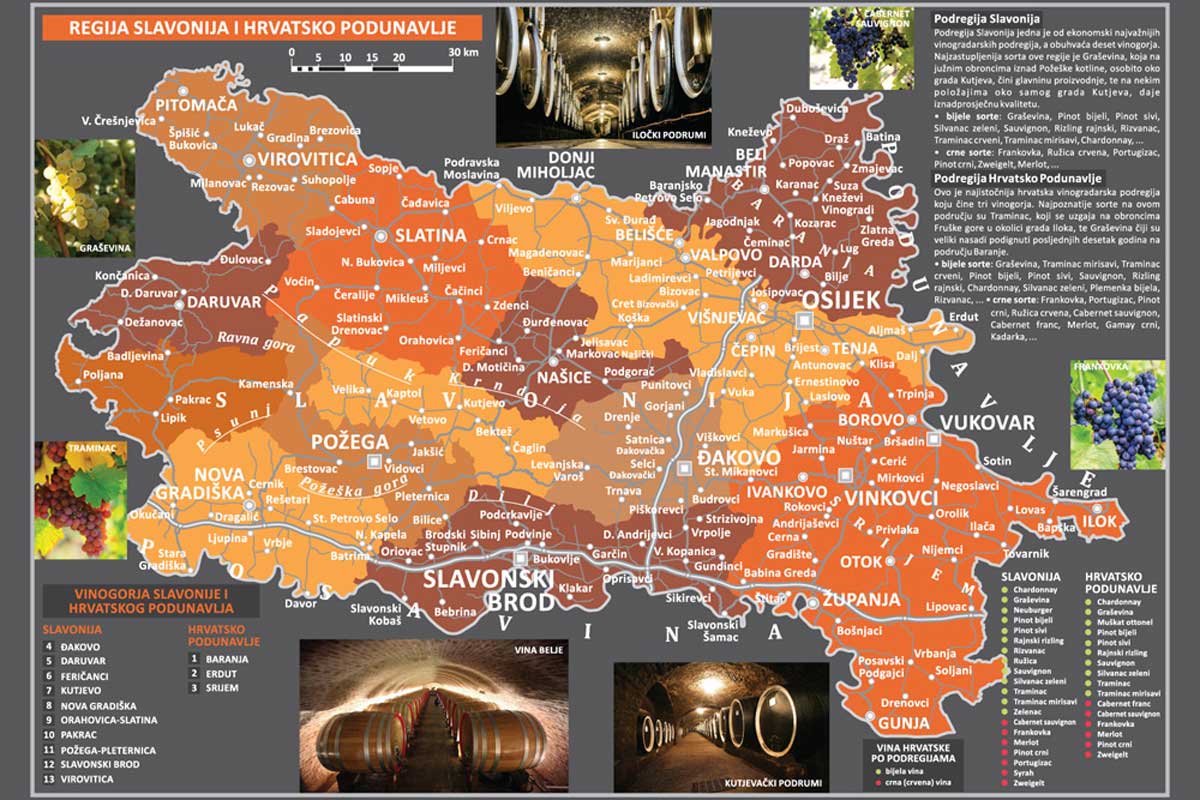
This enchanting landscape encompasses:
- Kutjevo,
- Požega – Pleternica,
- Orahovica – Slatina,
- Feričanci,
- Pakrac,
- Daruvar,
- Nova Gradiška,
- Slavonski Brod,
- Đakovo, and
- Virovitica
On these gentle slopes, positioned at altitudes ranging from 150 to 450 meters, these vineyards are home to numerous winemakers who craft some of the finest wines from continental wine-growing climates worldwide.
Kutjevo vineyards
The vineyards of Kutjevo stand as a beacon of excellence within the Croatian winemaking landscape, where the wines produced here command recognition on the global stage.
Over approximately 55 km, this viticultural haven encompasses around 800 hectares of meticulously tended vines. Most of these vineyards grace the southern slopes of Papuk and Krndija, reaching elevations between 200 to 350 meters, with a predominant south-facing orientation and a gentle to moderately steep incline.
The historical roots of viticulture in Kutjevo run deep, evident in numerous documents that underscore the enduring significance of grape cultivation since ancient times. The climate in these vineyards is nothing short of ideal, shielded from chilly northern winds and basking in abundant heat, humidity, and sunlight. Extreme temperature fluctuations are rare, fostering a stable environment for flourishing grapevines.
The soil, a crucial component of terroir, contributes to the unique character of Kutjevo wines. Comprising brown leached to bronze pseudo gleys, the soil composition varies at higher elevations, featuring richer stone debris and pockets of loamy clays, clay loams, sandy loams, and other diverse elements.
Most distinguished positions in Kutjevo vineyards are:
- Hrnjevac
- Mitrovac
- Vetovo
- Venje
- Vinkomir
Orahovica vineyards
In the pristine landscapes of Slavonia, the Orahovica vineyards unfold amidst a canvas of breathtaking beauty, harmonising with the UNESCO Geopark Papuk’s edges. This region, boasting exceptional natural diversity, intricate geology, and a distinctive microclimate, emerges as an idyllic haven for vine cultivation and winemaking.
Situated at elevations ranging from 160 to 250 meters above sea level, the vineyards, with a southern exposure, create an environment conducive to nurturing grapes of the highest quality. The unique conditions of Orahovica bestow upon the wines a distinctive complexity, encapsulating the essence of the terroir.
At the heart of Orahovica’s viticultural pride stands Silvanac zeleni (Silvaner), one of the world’s oldest grape varieties. Within the embrace of Orahovica’s terroir, Silvaner discovers its perfect habitat, giving rise to top-tier wines acknowledged by oenologists across the globe. It’s impossible to mention Orahovica without conjuring thoughts of Silvaner, a varietal that graces the vineyards and weaves the fabric of Orahovica’s winemaking narrative.
Most distinguished positions in Orahovica vineyards are:
- Martin Albus
- Jezerac
- Lipovac
Ilok vineyards
For millennia, the elixir of wine has woven itself into the very fabric of this region’s enduring traditions. This is the most eastern vineyard area in Croatia. There is a cellar on almost every street in Ilok, a testament to the locals’ profound connection with viticulture. Meanwhile, vineyards adorn the surrounding hills, each mild slope telling a unique story in the region’s vinous legacy.
The crowning jewel of Ilok’s vineyards is the celebrated Traminac, often crafted into dry or semi-dry wines. Beyond Traminac, the vineyards proudly cultivate a symphony of varietals, including Graševina, Pinot Grigio, Riesling, Chardonnay, Sauvignon, and distinguished red grapes like Frankovka, Merlot, and Cabernet Sauvignon.
Ilok bears the influence of the Danube, with expectations of alluvial effects on soil composition. However, the viticultural positions vary significantly across individual localities, shaping the nuanced flavours of the wines.
Even for Croatians, a surprising revelation is the abundance of sunny hours in Ilok, surpassing even the sunniest Dalmatian islands. This unique aspect adds a touch of magic to the grapes, resulting in wines that not only reflect the region’s rich heritage but also carry the warmth of the sun-kissed hills of Ilok.
Most distinguished positions in Ilok vineyards are:
- Principovac
- Radoš
- Vukovo
Baranja vineyards
In the translation from Hungarian, “Baranja” gracefully unfolds as “wine mother,” encapsulating the essence of this northeastern Croatian region. The Hungarian influence paints a natural tapestry across Baranja, where the Drava River serves as an administrative boundary but fails to demarcate the historical kinship in traditions.
Baranja boasts some of Croatia’s most fertile soils, a testament to its exceptionally flat terrain. Overlooking the region from the north stands the imposing hill, “Banska kosa” (241 m), adding a touch of elevation to the landscape. A distinctive feature of the vineyards here is the presence of “gators” (wine cellars) nestled in “surduk”, the steep, cut roads that gracefully wind through the hills, adding a unique charm to the viticultural panorama.
Most distinguished positions in Ilok vineyards are:
- Banska Kosa (Mons Aureus, Goldberg)
Erdut vineyards
The Erdut vineyard unfurls its splendour along the right bank of the Danube, tracing a picturesque path from Aljmaš through Erdut to Dalj. Nestled on the eastern slopes of the Dalj mountain, adjacent to the Danube River, the Erdut vineyards create a harmonious blend of terroir and tradition.
Stretching across fertile loess alluvium in an east-west direction on the slopes, the vineyards ascend to their highest points at 130 to 190 meters before gently descending southward.
In terms of variety, white grapes take centre stage, constituting a dominant share in overall production. Among the prominent white grape varieties are Graševina, Chardonnay, Riesling, Traminac, Pinot Grigio, while Zweigelt, Cabernet Sauvignon, Pinot Noir, Merlot, and Frankovka elegantly represent the red spectrum.
Most distinguished positions in Erdut vineyards are:
- Mali Varod
Notable Slavonian Wine Varietals
Graševina, Frankovka, and Traminac are considered crown jewels of Slavonian viticulture, offering a sensory adventure with their nuanced flavours and aromas.
However, Slavonia holds a repertoire of notable wine varietals that define the legion’s vinous identity.
Graševina
Graševina, also known as Welschriesling, is the undisputed queen of white grape varieties in Slavonia. Graševina’s roots in Slavonia run deep. The variety thrives in the region’s continental climate, finding an ideal home in the sun-drenched vineyards that adorn the landscape. Its cultivation has become a tradition and a symbol of Slavonian winemaking.
The important magic of Graševina lies in its ability to mirror the terroir of Slavonia. The grape flourishes in the region’s unique combination of soil, climate, and topography. The loamy and clayey soils impart a distinct minerality, while the continental climate, with its warm summers and cold winters, provides the perfect conditions for Graševina to thrive.
The resulting wines are characterised by crisp acidity, refreshing citrus notes, and a remarkable versatility that captivates the palate. This, at least, is the most dominant style of Graševina. In Slavonia, Graševina can achieve almost anything.
Frankovka
Frankovka, known as Blaufränkisch in the wider viticultural world, stands as a noble red grape variety that has left an indelible mark on the tapestry of Slavonian winemaking. Frankovka has found a second home in the sun-soaked vineyards of Slavonia.
The magic of Frankovka unfolds in the embrace of Slavonia’s terroir. The grape thrives on the loamy and clayey soils, absorbing the mineral nuances that lend depth to the wines. The continental climate, marked by warm summers and cold winters, imparts a dynamic character to Frankovka, resulting in wines with a deep ruby hue, complex flavour profile, and velvety tannins.
The magic of Frankovka unfolds in the embrace of Slavonia’s terroir. The grape thrives on the loamy and clayey soils, absorbing the mineral nuances that lend depth to the wines. The continental climate, marked by warm summers and cold winters, imparts a dynamic character to Frankovka, resulting in wines with a deep ruby hue, complex flavour profile, and velvety tannins.
In the culinary realm, Frankovka shines as a versatile companion. Its ability to balance fruitiness and structure makes it an ideal match for various cuisines.
Tasting suggestion: Martin Albus Franovka
The Frankovka crafted from grapes nurtured in the Martin Albus vineyard exudes a distinctive character shaped by a naturally controlled yield, resulting in nearly ideal grape parameters. On the olfactory journey, this wine unfolds with prominent notes of blackberries, sour cherries, and a delicate interplay of vanilla and cloves. The palate is enveloped by silky tannins, showcasing the inherent elegance and characteristic body of the Frankovka variety.
The winemaking process involves a tandem of alcoholic and malolactic fermentations, contributing to the wine’s overall finesse and balance. Following this, the wine undergoes a meticulous ageing process in both seasoned and brand-new barrique barrels for a minimum of a year. This duration allows the initially robust tannins to mellow while preserving the variety’s distinct character. The result is a meticulously crafted Frankovka that seamlessly marries softness with complexity, inviting enthusiasts to savour the nuanced expression of this exceptional Slavonian red.
Silvaner
Silvaner, a venerable grape variety, finds its home in the Orahovica subregion of Slavonia. This ancient variety, known for its sensitivity to terroir, has discovered an ideal habitat in Orahovica. Orahovica, with its untouched nature and stunning landscapes, sets the stage for Silvaner to express its full potential.
The palate is treated to a symphony of flavours, with floral notes, hints of citrus, and a subtle minerality dancing in harmony.
The special feature of the Silvaner from the vineyards of Orahovica lies in the very geographical location and the climate, which are responsible for the perfect fruity aroma of this extremely drinkable wine.
Near the centre of Orahovica is an old wine cellar built by a noble, Martin Nagy, in 1894. Buried in the hill in large barrels of Slavonian oak, it preserves, in addition to Silvaner, Frankovka, which is also characteristic of this area and the indispensable Graševina, the most famous Slavonian variety.
Tasting suggestion: Martin Albus Silvaner
The Martin Albus Silvaner, basking in the sun-kissed southeast-facing slopes’ warmth, benefits from constant air movement and a deliberately controlled yield. These elements converge to create a wine of impeccable harmony, where fruity aromas of green apples, vineyard peach, and citrus intertwine seamlessly with a complex flavour profile that lingers on the palate for an extended finish.
This Silvaner is a testament to the exquisite alignment between the grape variety and the Orahovica wine region, offering yet another compelling proof of their perfect synergy.
Slavonian Wine Culture
Slavonia’s wine culture has ancient roots, with viticulture dating back thousands of years. Historical documents and archaeological finds witness the longstanding tradition of cultivating vines in this fertile land. More than just a beverage, wine becomes a cultural artefact reflecting the region’s journey through time.
Let’s embark on a journey to explore the multifaceted facets of Slavonian wine culture, a captivating blend of heritage, craftsmanship, and a deep-rooted connection to the land.
Slavonian wine culture extends beyond the vineyards and cellars to the dining table. The region’s culinary landscape, rich with local delicacies, harmonises seamlessly with its wines. From pairing Graševina with freshwater fish to savouring Frankovka alongside hearty stews, the culinary synergy elevates the overall wine experience, creating a delightful union of flavours.
Wine&Food pairings
- Graševina with Freshwater Fish
Fresh style Graševina, with its crisp acidity and citrus notes, complements the delicate flavours of freshwater fish. Try it with grilled trout or carp for a refreshing and harmonious pairing.
- Frankovka with Hearty Stews
The robust character of Frankovka pairs wonderfully with hearty stews, such as goulash or “čobanac”. The dark fruit flavours and velvety tannins enhance the richness of the dish.
- Traminac with Spicy Dishes
The aromatic profile of dry or semi-dry Traminac complements spicy dishes exceptionally well. Try it with Slavonian specialities like fish paprikaš for a tantalizing experience.
- Frankovka Rosé with Charcuterie
The versatility of Frankovka Rosé makes it a perfect match for a charcuterie board. Enjoy it with local cured meats, cheeses, and pickled vegetables for a delightful array of flavours.
- Silvaner with Grilled Chicken
Silvaner’s subtle minerality and citrus notes pair beautifully with grilled chicken. Whether marinated or seasoned with local herbs, the combination will surely please the palate.
- Graševina Ice Wine with Desserts
Indulge in the sweetness of Graševina Ice Wine paired with decadent desserts like walnut cake or honey pastries. The luscious sweetness of the wine enhances the dessert experience.
- Late Harvest Silvaner with Foie Gras
Late-harvested ripe Silvaner aromatic intensity pairs exceptionally well with the decadence of foie gras. Savour the luxurious combination for a sophisticated dining experience.
Frequently Asked Questions
Are Slavonian wines only popular in Croatia?
Slavonian wines have gained international recognition, finding enthusiasts worldwide. It’s true it could be challenging to find Slavonian wine in your local store, but there are options for wine lovers to enjoy Slavonian wines almost anywhere in the world.
Which Slavonian wine region is a must-visit for wine tourists?
The subregion of Baranja, with its picturesque vineyards and vibrant culture, is a top choice for wine tourism at the moment. However, true and authentic experiences could also be found in less marketed areas, such as the Orahovica wine subregion.
What makes Graševina a standout varietal in Slavonia?
Graševina’s crisp acidity and versatility make it a beloved choice, suitable for various occasions and palates. It’s no accident this variety is considered indigenous to Slavonia. In no other region is Graševina equally important.
Where can I purchase authentic Slavonian wines outside Croatia?
Speciality wine shops and online platforms often offer a selection of Slavonian wines for international wine lovers. At Wine&more, the largest selection of wines is available from Croatia and Slavonia.



